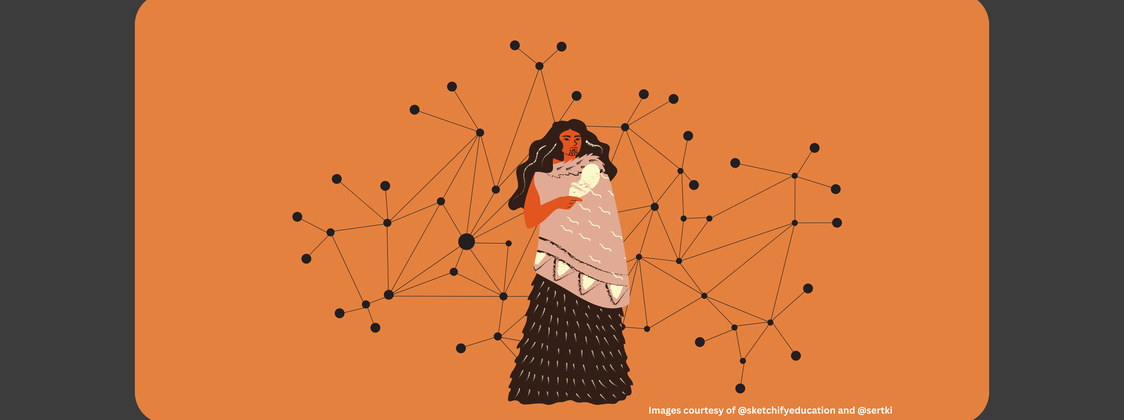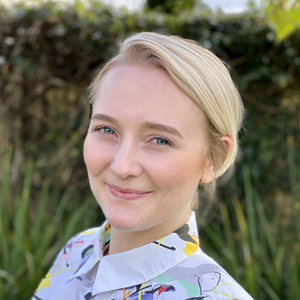Government guidance: For educators using AI agents
Article #5 of AI in Education Article Series: March 2025
Read about three pieces of government guidance on AI use and how this may apply to an AI agent for learner oral assessment.
Article #6 of AI in Education Article Series: April 2025
Understand who is publishing about the intersection of AI and Te Ao Māori, or working on innovative AI projects so you know who to follow, or connect with on your own projects.

Written by

Superpower: Romance languages
Fixations: Sunday drives
Phoebe works predominantly in social and market research, as well as monitoring and evaluation. Her projects often involve large-scale surveying and interviewing, and more recently, Artificial Intelligence in education.
She began her journey to research and evaluation in Brazil in 2020, supporting projects on social services, gender violence and education, for NGOS, governments and intergovernmental agencies. Prior to this, she worked as an English language teacher for adults.
Outside of work, Phoebe loves history, languages, animals and the outdoors. Together with her partner, she offers support services for Latin American migrants in New Zealand.
Phoebe has a Conjoint Bachelor of Arts and Commerce in Marketing (Market Research), International Business and Spanish.
In our last article, we explored the guidance the government has released on the use of Artificial Intelligence (AI) in New Zealand. Given that this guidance is still in its infancy and the limited commentary they had on the impacts on Māori, the team at Scarlatti is interested in what various researchers and innovators in this space are finding.
This article is the sixth in a series titled “AI in Education”, aimed at education providers interested in AI. The intention is for this series to act as a beginner’s guide to the use of AI in education, with a particular focus on AI agents. This series is being developed as part of a project to develop an AI agent for learner oral assessment, funded by the Food and Fibre Centre of Vocational Excellence. We invite you to follow along as we (Scarlatti) document our learnings about this exciting space.
The article below provides an overview of the people who are either publishing about the intersection of AI and te ao Māori, or working on innovative projects in this space. The list is not intended to be exhaustive, but it may help you to start learning about this space, to know who to follow, or who to connect with for your own projects.
Dr Karaitiana Taiuru (Ngāi Tahu, Ngāti Kahungunu, Ngāti Toa) is a leading voice on Māori data sovereignty. He hosts monthly Te Ao Māori webinars (started April 2025) covering topics such as AI’s impact on the environment, employment and Te Tiriti o Waitangi. His written research around AI has explored topics such as:
Dr Te Taka Keegan (Waikato-Maniapoto, Ngāti Porou, Ngāti Whakaue) is a senior computer science lecturer at the University of Waikato, the Co-Director Māori of the AI Institute at Waikato University, and a Computer Scientist working at Kāhui Raraunga Charitable Trust. In 2017, he received the Prime Minister’s Supreme Award – an award that recognises and encourages outstanding excellence in tertiary education at the highest national level.
Much of Dr Te Taka’s recent work explores how Te Reo Māori is integrated into large language models and includes topics such as:
Sara Cole Stratton (Ngāti Hine, Ngāti Kahu) is the founder of Māori Lab, which helps businesses and communities navigate change and create sustainable futures by applying tikanga and te ao Māori values. She works as an Indigenous AI ethics and equitable inclusion advisor. This involves showing how Māori frameworks can be added to AI risk mitigation policies. She is also a part of ED-Tech New Zealand and is preparing to run an AI hackathon with tamariki in Te Tai Tokerau, aiming to involve them as potential AI creators rather than just consumers.
See more of her work here:
Peter-Lucas Jones (Ngāi Takoto, Ngāti Kahu, Te Rārawa, Te Aupōuri) is the CEO of Te Hiku Media and talks about the possibilities that AI offers to assist in reversing cultural and language decline (Smith, 2024). Through his company, he has created products that can:
Xaviere Murray-Puhara (Ngāti Kahungunu ki Wairarapa me Heretaunga, Ngāti Porou) and Michael Puhara (Ngāti Kahungunu ki Wairarapa me Heretaunga, Ngāti Porou) are the co-founders of the father-daughter-AI-run software company kahu.code. Their company specialises in creating bilingual text and voice models as well as large-scale translations, with a focus on reo hangarau (tech terminology). Their mission is to “facilitate seamless kōrero (communication) between technology and humans, enabling effective interactions and understanding, supporting the revitalisation of Indigenous languages”. Their products include:
They are also in the early stages of developing a transcription tool (not yet named).
Poipoia te kākano kia puawai.
A range of research is emerging about the intersection of te ao Māori and AI, exploring topics such as how to incorporate te reo Māori into LLMs and Māori data sovereignty. There are also a number of innovators who are integrating te reo Māori and mātauranga Māori into new AI products. The above list could help others to start learning in this area, or to find a partner to work with on a project.
For our own AI assessment agent, we are considering how future iterations could consider the findings of others in this space. We are also thinking about how we could conduct wider scaling testing beyond our pilots to ensure that it works for a variety of learners.
Questions that we are asking for our own AI agent:
Interested in following our journey into AI?
Brown, P., Wilson, D., West, K., Escott, K., Basabas, K., Ritchie, B., Lucas, D., Taia, I., Kusabs, N., & Keegan, T, T. (2024). Māori algorithmic sovereignty: Idea, principles, and use. Data Science Journal, 23(1), 15. Available at: https://doi.org/10.5334/dsj-2024-015
C-Minds and Stratton, S. (2023). Masterclass: Māori frameworks and perspectives on inclusiveness for ethical AI. AI for Climate Conference. Retrieved 26 March, 2025, https://www.youtube.com/watch?v=82G3B0Lh-1E
Keegan, Te Taka. (2017). Machine translation for te reo Māori. In H. Whaanga, T. T. A. G. Keegan, & M. Apperley (Eds.), He Whare Hangarau Māori - Language, culture & technology, pp. 23–28. Retrieved 16 January 2025, https://researchcommons.waikato.ac.nz/entities/publication/9d8919f9-eef9-425a-a52f-69b6df53bd25
Stratton, S. (2022). Bridging the digital divide through a Māori lens. Retrieved 16 January, 2025, https://www.asiapacific.ca/podcast/between-binary-tech-and-global-south/sara-cole-stratton-bridging-digital-divide-through.
Taiuru, K. (2024a). Artificial intelligence regulation from a Māori perspective. Retrieved 16 January, 2025, https://www.taiuru.co.nz/artificial-intelligence-regulation-from-a-maori-perspective/
Taiuru, K. (2024b). Treatment of Māori language in language modelling. Retrieved 16 January, 2025, https://www.linkedin.com/pulse/treatment-m%C4%81ori-language-modelling-dr-karaitiana-taiuru-jp-minstd-w8jjc/
World Economic Forum. (2022). A Blueprint for Equity and Inclusion in Artificial Intelligence. Retrieved 26 March, 2025, https://www.weforum.org/publications/a-blueprint-for-equity-and-inclusion-in-artificial-intelligence/
Yogarajan, V., Dobbie, G., and Te Taka Keegan. (2024). Debiasing large language models: Research opportunities. Journal of the Royal Society of New Zealand, vol 55 (2), 372-395.